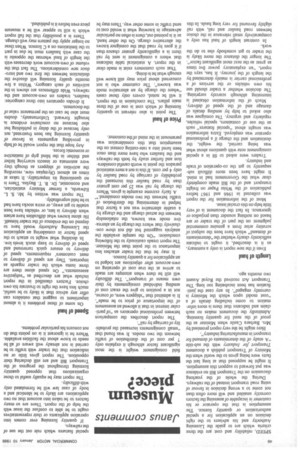Janus comments
Page 50

If you've noticed an error in this article please click here to report it so we can fix it.
Museum piece?
field consignment weight is the most significant factor although it explains only 7 per cent of the distribution of traffic between the two modes. It was found that "small consignments increased the probability of carriage by rail".
The report describes the comparison between professional operators as "of particular interest in that it allowed an assessment of the importance of price to be made".
It is admitted that "shippers were, of course, not in a position to give the exact cost of sending individual consignments by their own means of transport". The difficulty will still be there when attempts are made to arrive at the true cost of operating on own-account after objections are lodged to an application for a quantity licence.
It may be that the trader attaches less importance to the point than the Minister. The report treads cautiously to the following conclusion: "On the sample available the analysis suggested but did not show conclusively that where the charge by an alternative mode was known, the relationship between the actual charge and the charge by a usable alternative was not a factor that helped in determining the distribution of traffic between the two modes considered."'
A fairly extreme example is given. Where the charge by rail was 25 per cent greater than by road haulier this increased the probability of carriage by road haulier by only 4 per cent. If this is not a mere statistical paradox the point is worth careful consideration and further study by both the railways and the hauliers who have more than once been lured into a rate-cutting contest on the assumption that this consideration was paramount in the mind of the customer.
Price of haul
The point is also relevant to quantity licensing of which cost is one of the three main pillars. The conclusion in the report, it will be noted, covers only those cases "where the charge by an alternative mode was known". The customer who is not concerned about price may still know well enough what he is doing.
That such customers exist is made clear in the report. A statistical table indicates that where a consignment is sent by rail there is a significantly greater chance than if it goes by road that the consignor knows the alternative charge. On the other hand, as it is pointed out, there is often no particular advantage in knowing what it would cost to send traffic in some other way. There may be special features which rule out the use of the railways.
If quantity licensing ever comes into operation applicants or their representatives ought to be able to confuse the issue with the help of the report. There are so many factors to be taken into account that no two applications are likely to be identical and a body of case law will be formulated only with difficulty.
The report may be equally useful to those organizations that opposed quantity licensing throughout the progress of the Transport Bill and are still declaring their opposition. The report gives little or no indication that the trader with traffic to be carried is not already well aware of all he needs to know about the facilities available. Where he is ignorant it is on points that do not concern his particular problems.
Speed of haul
On some of these problems it is almost impertinent to suggest that outsiders can offer any advice that is likely to be useful, much less have the right to frustrate his own choice. Factors classified in the report include what are described as "subjective assessments." On speed alone there are three items which the trader regards as important. They are speed of delivery to meet customers' requirements, speed of delivery to ensure quick turnround and speed of delivery to keep stock levels low.
In deciding what weight to attach to the speed factor in considering an application the Licensing Authority would have to depend on the evidence of the trader himself. He alone knows what difficulties have arisen when delivery is late, or vehicles have been unable to get away, or extra stocks have had to be held unprofitably.
The report was written by Mr. S. L. Edwards, a former Ministry statistician, and economist, Dr. B. T. Bayliss. There is no questioning its impartiality. It takes at times an almost Olympian view, recording the activities of shippers as though they were automata or insects scurrying hither and thither. in the blind grip of instinctive or economic forces.
Any hope that the report would be of help in providing arguments in favour of quantity licensing has been frustrated, not only because of the delay in publishing but also because no conclusive evidence is brought forward. Unfortunately, doubts must also be cast on the permanent value of the document.
It divides operators into three categories: hauliers, traders on own-account and the railways. Wide differences are shown in the activities of each category. Within a few months quality licensing will dissolve the distinction between the first two and introduce new considerations. The fact that the volume of own-account work decreases with the length of haul whereas the opposite is the case with hauliers must be due in part to the limitations on a C licence. When these no longer apply the pattern may well change.
There is a possibility that the full report which is still to appear will be a museum piece even before it is published.








































































































